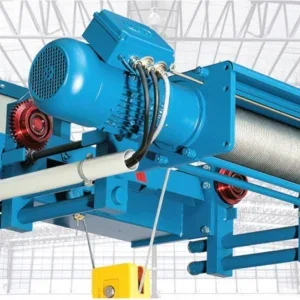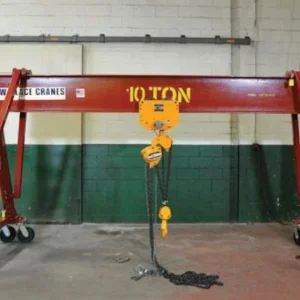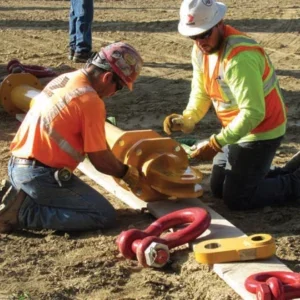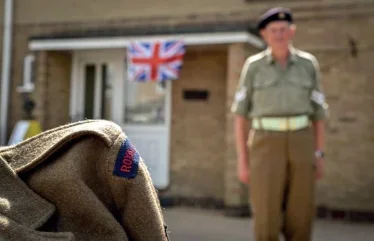
The Military Transition Scheme is designed to help and support all service leavers transitioning from military to civilian life, with a view to embarking on a new career path within the lifting industry. The scheme is also designed to open working relationships between service leavers and the LEEA membership companies with a view to potential future employment.
The MTS offers a free Foundation Certificate e-learning course to all serving members of the armed forces in any region globally. It is also offered to any veteran within two-years of their service leaving date. Diploma training courses will be available at MTS discount rates.
Veterans and reservists could be a perfect fit for lifting businesses seeking highly professional, self-motivated individuals equipped with initiative and a wide range of transferrable skills in areas such as engineering, leadership and management, communications, organisation, problem solving, teamwork and health and safety.
“We want to demonstrate to our military veterans and reservists just how wide and rewarding a career in the lifting equipment industry can be. We’re also reaching out to our members and industry partners to find companies who would be able to offer employment to veterans and reservists. We have already seen success, with several of our military veterans and reservists having already secured employment with LEEA members through the Military Transition Scheme,” said Andrew Wright, head of Learning & Development, LEEA.
Working with partners including Tom Basford, ARTE (Advise Retain Transition Engage) Warrant Officer, Royal Electrical and Mechanical Engineers (REME); and Adam Marchant-Wincott, director, Employment and Finance, The White Ensign Association (The WEA), they are informing and providing guidance to all serving and former members of the Royal Navy, Royal Marines and Royal Fleet Auxiliary, to support ex-servicemen through the process of entering the civilian workforce.
Dave Tucker, senior training officer, LEEA; Dave Thomson, training manager, LEEA and Robert Rorison, Member Engagement Manager for Scotland, Northern England & Ireland, LEEA, all joined the association having come from a military background.
Tucker delivers training worldwide for the association and is also responsible for the MTS. Before joining LEEA, he spent 24 years with the Royal Electrical and Mechanical Engineers (REME) as a recovering mechanic, stepping out in 2014.
“The Military Transition Scheme has been revamped to meet the modern needs of both the association and service leavers. It’s designed to help both members within the association and focus more on the service leavers themselves. So, service leavers, whether they are leaving the services due to timing out at the end of their contracts or for other reasons, have the opportunity to enlist onto our scheme within six months of leaving and the scheme remains valid for two years afterwards,” he said.
“It is designed to support worldwide leavers regardless of their experience, professional trades or arms. So, for example, based upon the United Kingdom’s forces, it’s open to both the Army, the Navy and the Royal Air Force.
“More information is available on the LEEA website itself, which is where service leavers can enlist or enrol onto the system. That will then come directly to me for approval and once they’re enlisted onto the program, they have two years to complete our foundation course, which is a certificate recognised around the world and the training is free.
“Once they have completed this training, they then have an opportunity to conduct any of the other LEEA advanced programs should they wish to, which are discounted at current member rates.”
Basford currently serves in the core of REME at MoD Lyneham. The REME Association Job Agency (RAJA) was established in 1993 in support of REME personnel, transitioning soldiers and officers, whether they’ve ended their contract, they’re running out or they’ve decided to put their notice in and go into their resettlement phase, which is a minimum of 12 months return of service.
“During that 12-month period they’ll be able to conduct resettlement activities, engaging with all organisations, companies, attending career events and advertise themselves as open for work as part of their transition out into the civilian sector upon leaving the forces,” said Basford.
“At the top level is the Career Transition Partnership (CTP), part of the Ministry of Defence (MoD), to provide tri service resettlement, which includes the Army, Navy, RAF, and Royal Marines. In addition, you’ve got specific agencies and charities that work closely with the CTP and RAJA, and REME is a part of that.
“RAJA is supported by the REME charity, like all the other charities that support the other cap badges, the other services are the White Ensign, for example. For the Navy, you’ve got the RAF Benevolent Fund.
“We’re only a two-person team, myself and Kirsty Bateman. So we’ll support every single serving soldier or officer that’s entered into their resettlement period and introduce them to RAJA. In addition to the great support that CTP provides.
“RAJA is unique because its engineering focused and that’s where RAJA links in with LEEA. So, we’ve got vehicle technicians, vehicle mechanics, and recovery mechanics.
“The recovery mechanics are like the AA, the RAC to the British Army’s fleet of equipment and vehicles, but a specialist role they also conduct is lifting inspections on our chains on the cranes, and on the shackles. All the lifting equipment that’s used by the military our recovery mechanics deal with. Within LEEA there are ex REME and that’s where the link in supporting our service workers exists.”
Thomson joined LEEA in 2012 and spent 23 years in the military as a recovery mechanic with REME. He served in units across the UK, Germany, Belize, and operational tours in the Balkans.
“I was fortunate enough to go to a military event highlighting LEEA and the benefits of joining the association and what ex-servicemen can bring to the engineering industry,” he explains.
Robertson is an ex-Chief Petty Officer in the Royal Navy. He served on submarines for 26 years before joining LEEA.
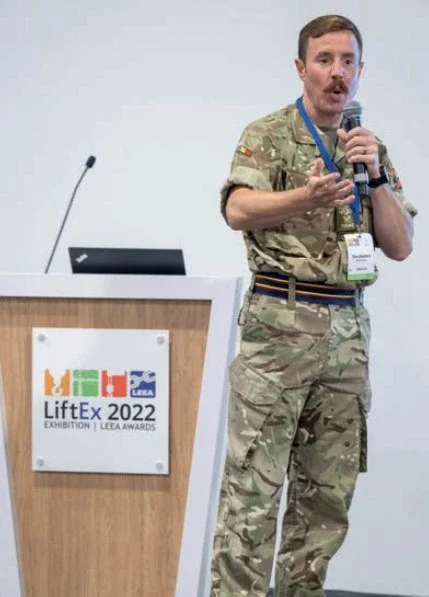
“When I joined the lifting industry, there wasn’t what we call a Military Transition Scheme. I had to get a civilian company to pay for all my courses, but I would recommend to anybody leaving the Armed Forces, or who is just about to leave, to go through LEEA’s MTS because this will give you a free foundation course. On completion of that, the world is your oyster. Companies are always looking for lifting engineers, so please consider it. I would highly recommend it.”
CAREER TRANSITION PARTNERSHIP
Every year there are approximately 14,000 people that leave the military looking for civilian employment. These people have had varied careers, some have served for a long time, some have served for a short time, but they all have valuable skills to give to businesses.
James Moore is an Employer Engagement Manager with the Career Transition Partnership (CTP), which works with the Ministry of Defence (MoD) and Right Management to support those leaving the Armed Forces and transition into civilian life.
Having worked with LEEA for a number of years, CTP is trying to work with more trade associations as a bridge to reach out to companies. Normally it works direct with an employer but trade bodies act as an excellent gateway to more contacts and useful advice.
CTP is split into three pillars of support; resettlement services; further education or retirement and employment support.
It offers support on how leavers can market themselves to civilian employers such as CV writing, social media, and networking opportunities.
Everybody gets a career consultant as they go through their journey. This includes looking at what training needs they require, for example, there is a training arm within CTP, which delivers vocational training, subsidised by the MoD.
“The Armed Forces is a continuous training environment where you never stop learning. We have been working with LEEA for a number of years now, to promote the CTP to LEEA members the value of employing those that have served in the military. They bring a huge host of skills to the workplace. And adapt very quickly to new workplaces,” said Moore.
“I served for 23 years in the Army, and like many people when I left, I didn’t really have a clear plan of what I wanted to do because in the military you do a little bit of everything. So I had done some training, HR, and operations. And it was my career counsellor at CTP that found me a job that I had previously done, so I started off as an account manager.
“At first I didn’t think I had the right skills for the job and that’s key because many of our service leavers don’t think that they’ve got all the skills that employers are looking for and we’re trying to convince them that actually, you only need four or five of those skills to submit your application in order to secure an interview and then see what happens from there.”
Moore spent two years as an account manager at CTP, working with employers directly, helping them source people from the military talent pool, before being promoted to team manager three years ago.
“My advice is ‘Don’t pigeonhole yourself’. Don’t think that because you’ve done something in the military, you need to do that in the civilian workplace. Absolutely not. There’s a whole range and variety of roles that many military people can go and do,” he said.
“You’ve got to start by being a little bit selfless. One of the things we’re taught in the military is selfless commitment. We find it very hard to talk about individual achievements. But now my advice to them is to talk about those achievements because that’s what an employer wants to see. They want to see what you bring to the table in terms of your leadership, management, and teamwork. Because that’s hugely valuable to employers.”
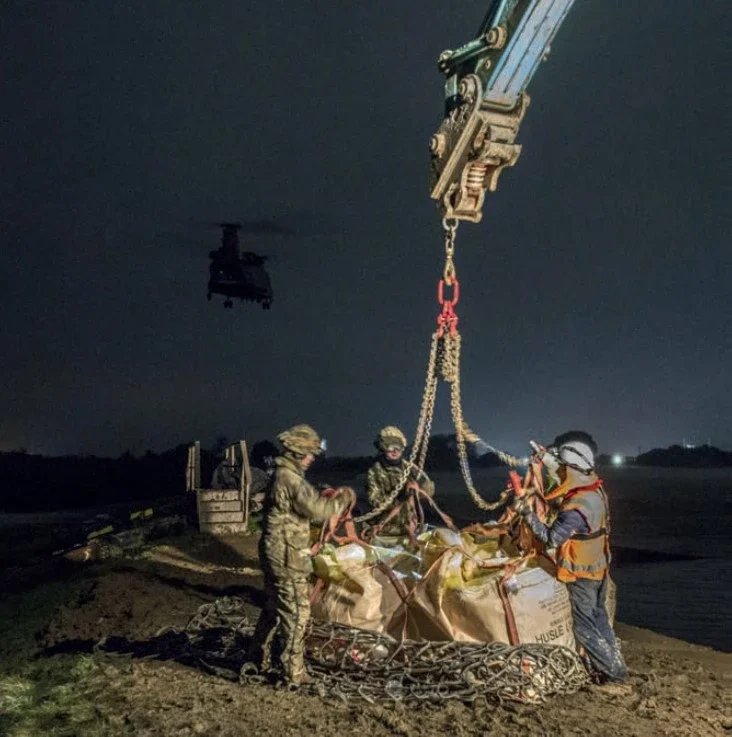
The CTP is a free service, funded by the MoD. Companies that want to register with the partnership, to recruit from the talent pool, can sign up on the website at ctp.org.uk on the tab marked employer’s registration page. Those details will then be submitted to the account team who will get in touch to discuss what you need and help you to connect to the ex-military service community.
The CTP also promotes its services through social media, such as LinkedIn and attends many employment fairs up and down the country.
“We use that as our springboard to tell people what we do, how we do it and promote good news stories. It’s not just a job that we try to help ex-servicemen find but their next career path and it can be difficult making that transition because It’s a new environment, a new way of working and sometimes your colleagues might not understand the way you’ve worked in the past. But there is so much opportunity out there that you really shouldn’t be put off,” said Moore.
“I never, ever thought I would be able to do this job. And it wasn’t until my career consultant sat me down and said, you know, you can do this job because you’ve done elements of it before, and she really teased it apart from me. And that made me realise I could probably do it. It’s important to have confidence in your abilities. Think back to how confident you were in the military and bring that into your civilian workplace.
“If your company hasn’t got an Armed Forces network, then create one to help people understand what it’s like being in the military, dispelling the myth that ex-servicemen are all autocratic who just shout and scream at people. It’s not like that.”
Moore explained that connecting to LEEA was a great way to increase the professional knowledge of its career consultants, running Q&A sessions with the engineering association.
“We work mainly with employers directly and so, it can be difficult with trade bodies because they’re generally not employing, but they’re a really good avenue for us to get the message out there about the value of a service person,” he said.
“You know we don’t all shout and scream to get things done. We’re not all institutionalised. It must be scripted, and it must be a certain way. Many ex-servicemen and women are fantastic at thinking outside the box, fixing things with minimum kit and equipment because that’s what they do.”


